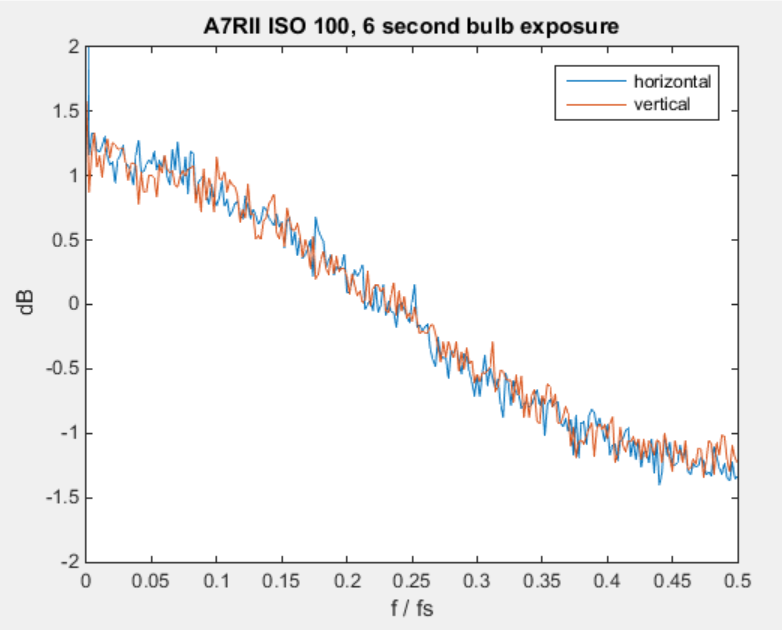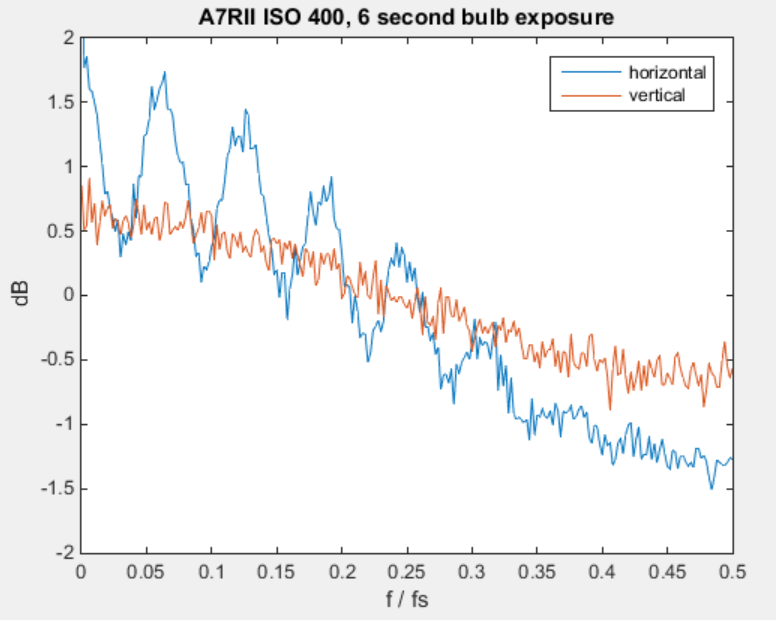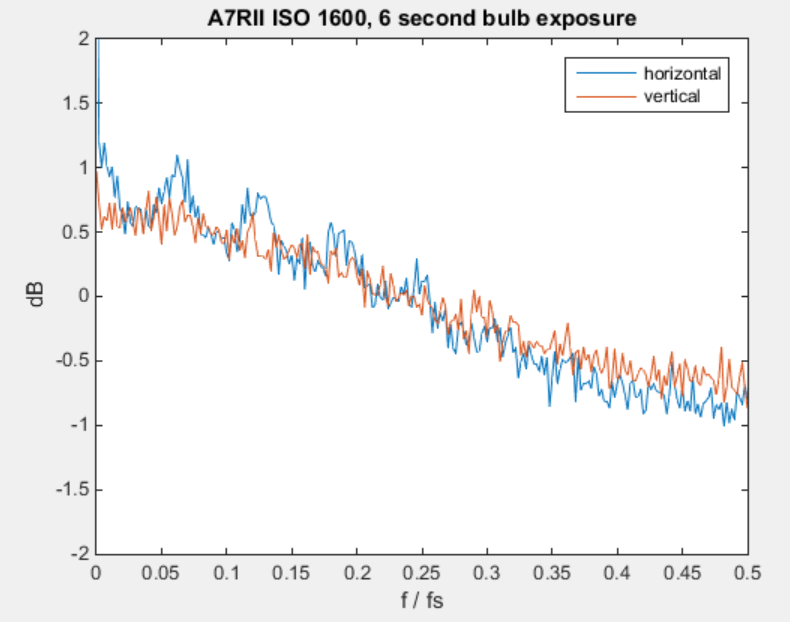I was asked if the spatial filtering mentioned in the previous post that takes place in bulb mode at ISO 6400 also happens at other ISOs. I tested three of them.
It looks like the filtering is nonlinear, since it has different effects at the different read noise levels of different ISOs. I assume, but do not know, that the processing is not specifically tied to each ISO setting.



I was aware that previous A7 cameras used spatial filtering at very high ISOs and at all ISOs in Bulb mode. It’s disappointing to see that the A7R2 does so as well because it limits the usefulness of the camera for night/astrophotography work. I know Sony is working on and considering implementing a firmware upgrade that would provide the option to record lossless RAW data. I wonder if that option would include eliminating spatial filtering for Bulb exposures?
Hy Jim
Nice post, very usefull! Could you also share your experience with the intervalometers? Whats the Problem with the sony app? Are the Intervalometers from older Ax-Series bodies compatible?
Best Regards, Darius
PS: nice matlab plots 😉